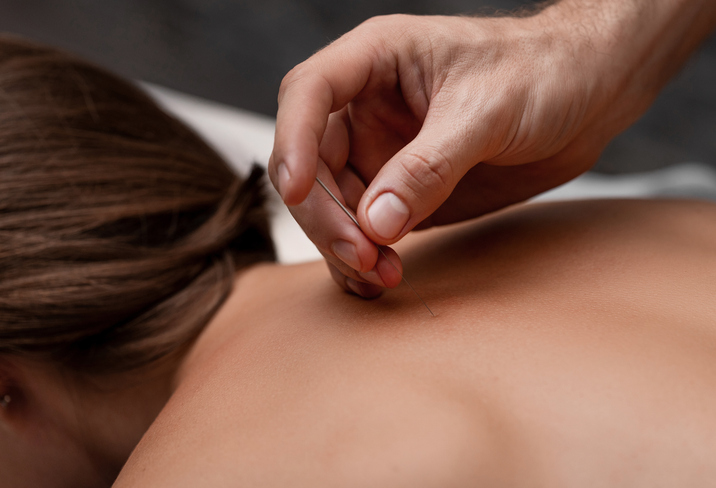
Understanding Dry Needling in Physical Therapy: Benefits and Applications
Dry needling is a therapeutic technique used by physical therapists to treat musculoskeletal pain and dysfunction.
This practice involves inserting thin, solid filiform needles into trigger points or tight bands of muscle to alleviate pain, reduce muscle tension, and promote healing. Although it shares some similarities with acupuncture, dry needling is rooted in Western medicine principles and focuses specifically on treating musculoskeletal issues.
This article explores the concept of dry needling, its benefits, applications, and what patients can expect from this treatment.
What is Dry Needling?
Dry needling, also known as intramuscular stimulation (IMS), targets myofascial trigger points, which are hyperirritable spots in skeletal muscle associated with palpable nodules in taut bands of muscle fibers.
These trigger points can cause pain, limit range of motion, and contribute to various musculoskeletal disorders.
How Dry Needling Works
The technique involves the insertion of thin needles into these trigger points to stimulate a physiological response. This can include:
- Releasing Muscle Tension: The mechanical action of the needle can disrupt the tightness in the muscle fibers, helping to release tension and reduce pain.
- Increasing Blood Flow: The needling process promotes local blood flow, which aids in the delivery of oxygen and nutrients essential for tissue healing.
- Altering Pain Signals: Dry needling can influence the nervous system, modifying the way pain signals are transmitted to the brain and potentially reducing the perception of pain.
- Triggering Healing Responses: The insertion of the needle creates a minor local injury, which can stimulate the body’s natural healing processes, including the release of endorphins and other pain-relieving substances.
Benefits of Dry Needling
- Pain Relief: Dry needling can provide immediate relief from pain, especially in conditions involving chronic muscle tightness and trigger points. By targeting the source of pain, it helps alleviate symptoms and improve overall comfort.
- Improved Mobility: Releasing tight muscles and trigger points can enhance range of motion, making it easier for patients to move and perform daily activities. This is particularly beneficial for athletes and individuals with movement restrictions due to muscle tightness.
- Accelerated Recovery: By promoting blood flow and triggering the body’s healing mechanisms, dry needling can speed up the recovery process from injuries, allowing patients to return to their normal activities more quickly.
- Complementary Treatment: Dry needling can be used alongside other physical therapy techniques, such as manual therapy, therapeutic exercises, and modalities like ultrasound or electrical stimulation, to enhance overall treatment outcomes.
Applications of Dry Needling
Dry needling is used to treat a variety of musculoskeletal conditions, including:
- Chronic Pain Conditions: Such as fibromyalgia, myofascial pain syndrome, and chronic neck or back pain.
- Sports Injuries: Including muscle strains, ligament sprains, and overuse injuries.
- Post-Surgical Rehabilitation: Helping to manage pain and muscle tightness following surgery.
- Joint Pain: Such as that associated with arthritis or tendinitis.
Headaches: Particularly tension-type headaches and migraines related to muscle tension
What to Expect During Dry Needling
Patients undergoing dry needling can expect the following process:
- Initial Assessment: The physical therapist conducts a thorough assessment to identify the source of pain and determine the appropriate treatment plan. This includes evaluating the patient’s medical history, current symptoms, and physical condition.
- Treatment Session: During the treatment, the therapist inserts thin needles into the identified trigger points. The insertion may cause a brief twitch response in the muscle, which is a positive sign that the trigger point is being effectively targeted.
- Sensations and Reactions: Patients may feel a slight discomfort or a deep ache when the needle is inserted, but this sensation typically subsides quickly. Some patients may experience immediate pain relief, while others may notice improvements over several sessions.
- Post-Treatment Care: After the session, patients might experience mild soreness, similar to the feeling after a vigorous workout. This soreness usually resolves within a day or two. The therapist may recommend specific exercises, stretches, or other treatments to complement the effects of dry needling.
Dry needling is a valuable tool in physical therapy, offering a targeted approach to treating musculoskeletal pain and dysfunction.
By addressing the underlying causes of pain, such as muscle tightness and trigger points, dry needling can provide significant relief and improve overall function. Its effectiveness, combined with its ability to complement other therapeutic techniques, makes it a popular choice for patients seeking relief from chronic pain, sports injuries, and other musculoskeletal conditions.
As with any treatment, it is essential to consult with a qualified physical therapist to determine if dry needling is appropriate for your specific condition and to ensure it is performed safely and effectively.
Dry Needling is clinic specific, so please contact your preferred location to confirm availability.

